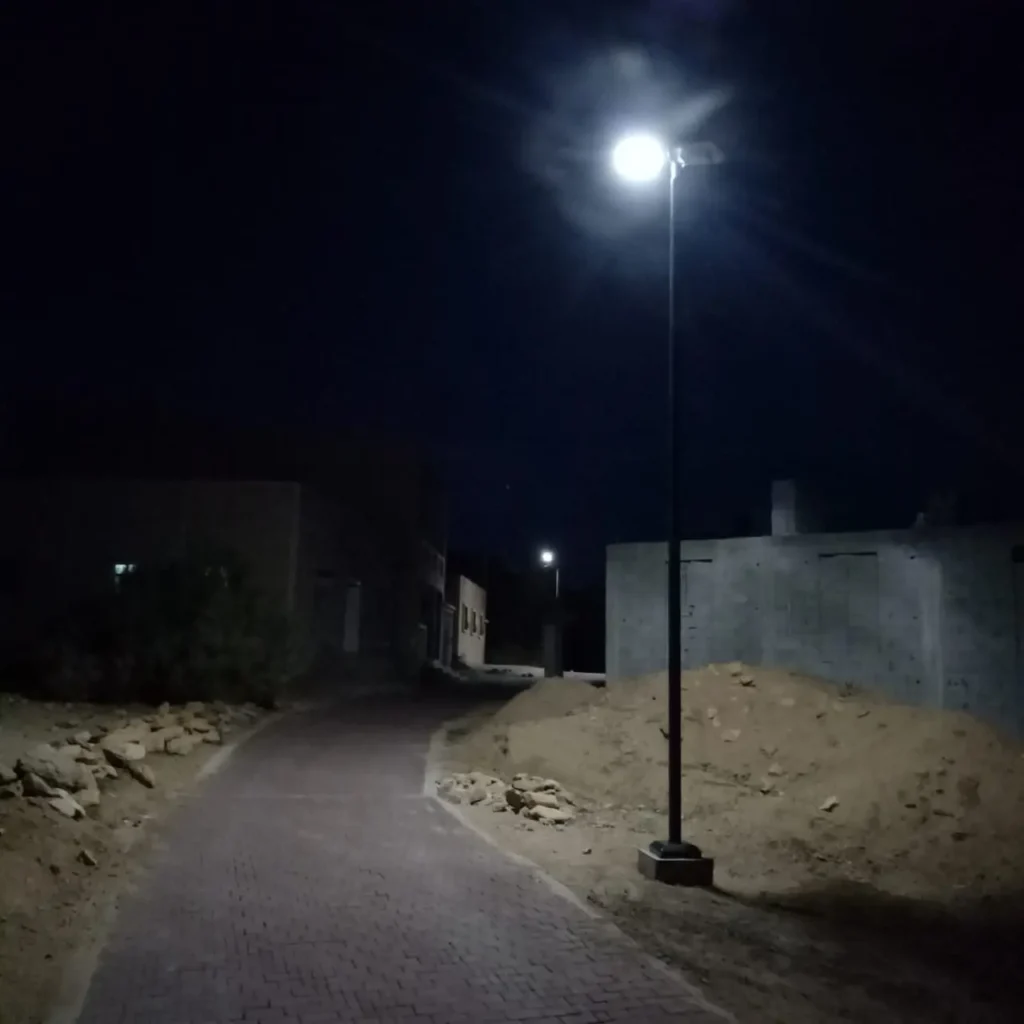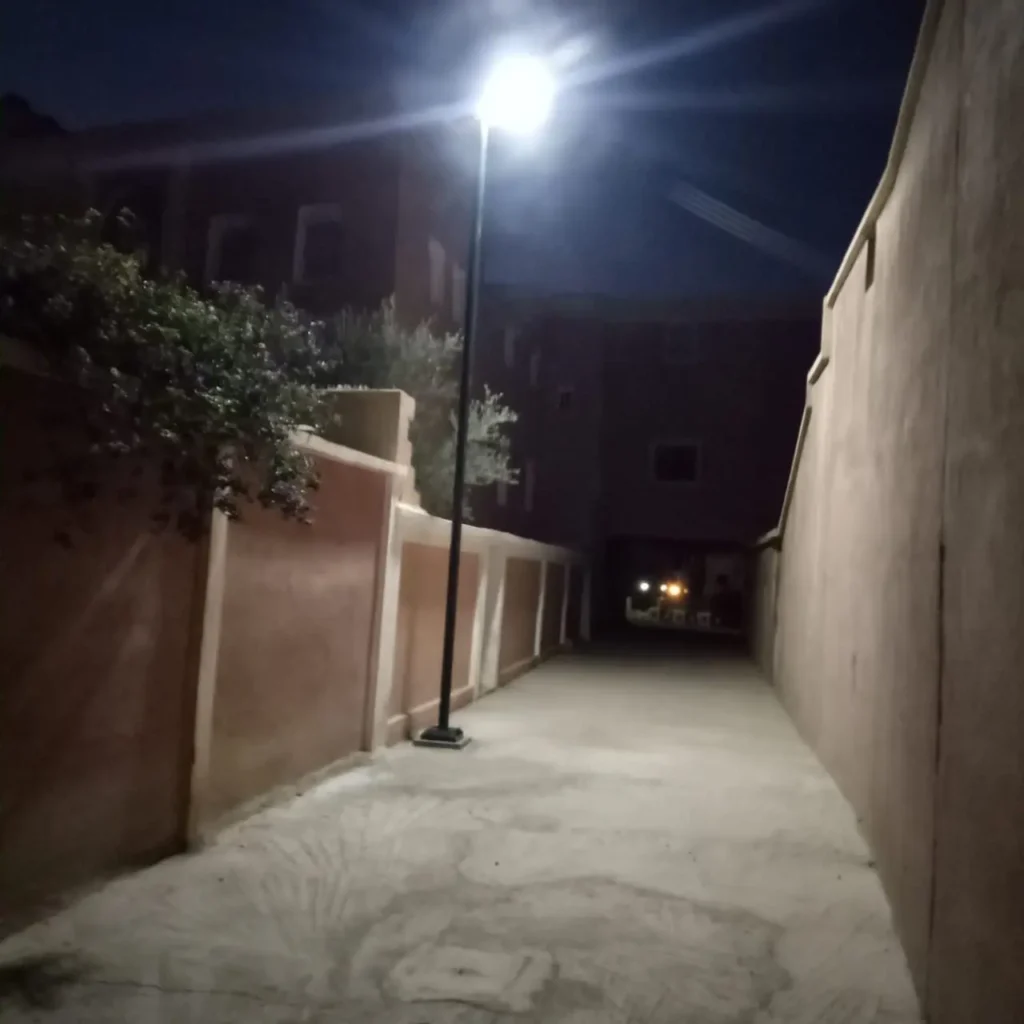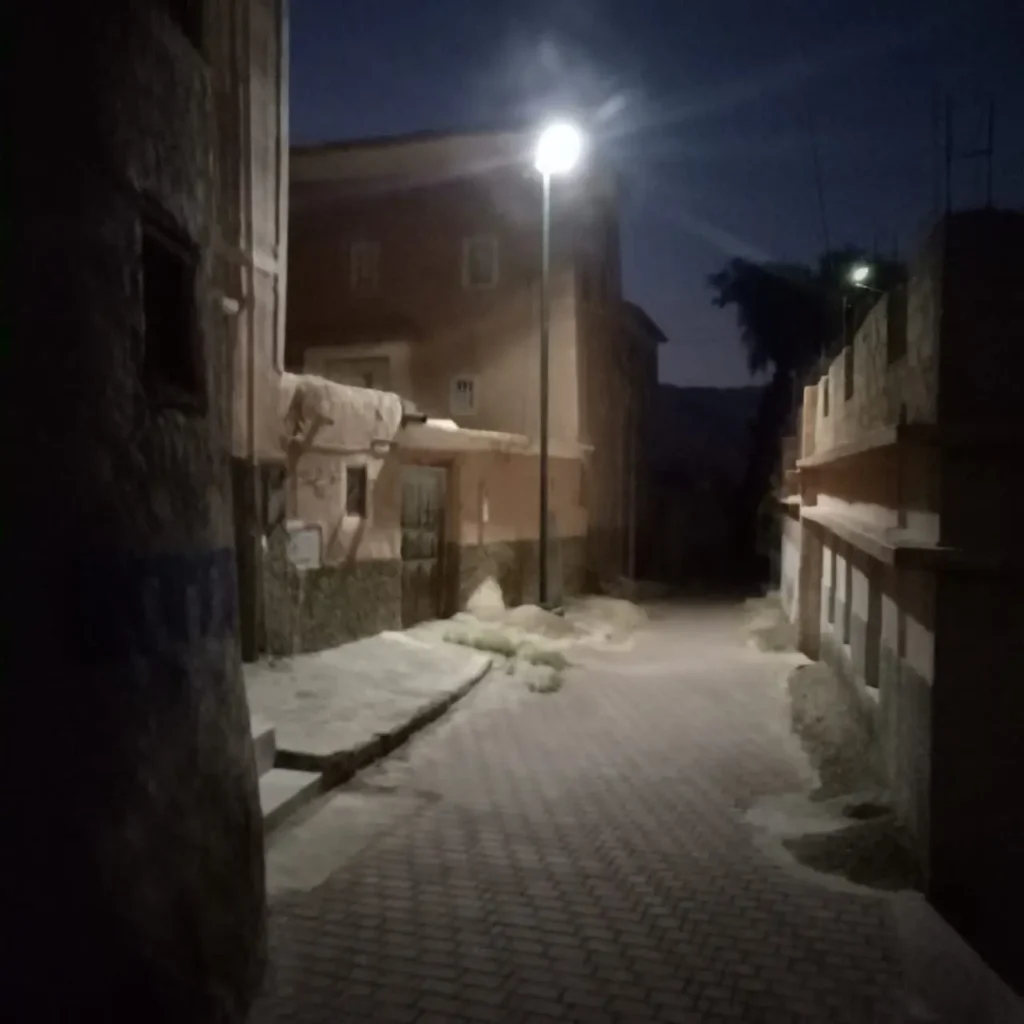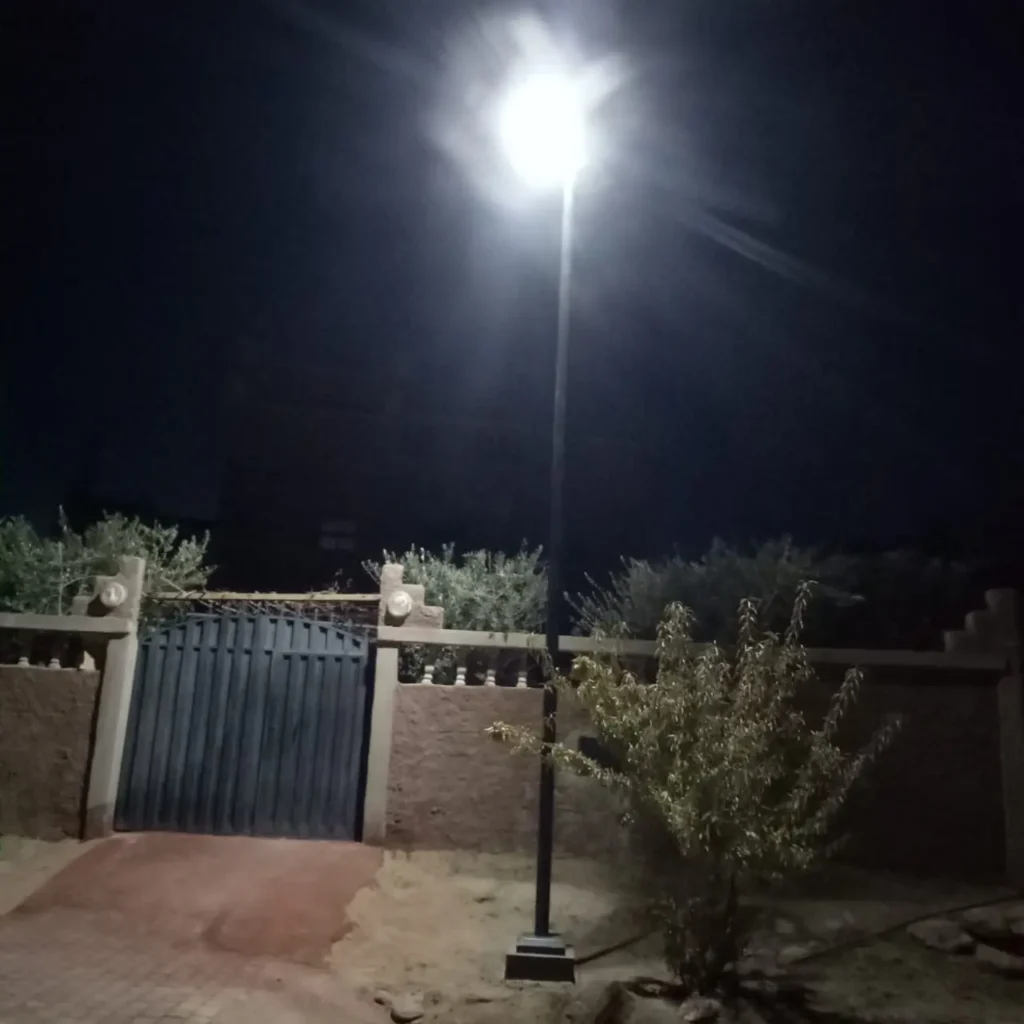Abstract
This article explores the successful implementation of a solar lighting project using the SRESKY ATLAS series solar streetlights in a remote Moroccan village. By installing 50 high-efficiency units, the project not only addressed the issue of inadequate nighttime lighting but also significantly improved safety, quality of life, and community vitality. This case study highlights the transformative potential of sustainable lighting solutions for underserved communities and offers a replicable model for similar regions worldwide.
I. Project Background
Project Location
The village is situated at the foot of Morocco’s Atlas Mountains, about 50 kilometers from the nearest city. It has a population of approximately 500 and relies mainly on agriculture and livestock farming. Due to its remote location, grid access is extremely limited, leading to long-standing challenges with nighttime visibility and safety.
Project Objectives
The project aimed to improve nighttime lighting, enhance travel safety after dark, and boost overall living standards by deploying sustainable lighting solutions. A total of 50 SRESKY ATLAS series solar streetlights were installed to bring lasting improvements to the village.
II. Site Environment and Challenges
Terrain and Layout
The village has narrow alleys (3–5 meters wide) and closely packed homes. Roads are made of brick, stone, and cement, with uneven sections—demanding precise light distribution and strategic installation.
Natural Conditions
Located in a high-altitude area, the village faces harsh weather: winter temperatures can drop to -5°C with snow, while summers bring heat, dryness, and sandstorms. These conditions challenge the durability and performance of lighting systems.
Infrastructure Constraints
With no stable grid power and limited maintenance resources, the lighting solution had to be low-maintenance, reliable, and entirely off-grid.
III. Solution: ATLAS Core Technology Designed for Adaptability
To meet the site’s challenges, the project team selected the SRESKY ATLAS series. Its advanced technologies and adaptability made it ideal for this environment:
Key Features and Advantages
-
ALS 2.4 Rainy Weather Technology
Provides up to 10 days of lighting during continuous rain, far surpassing typical 3–5 day runtimes.
Addresses: Frequent cloudy weather in Moroccan winters. -
-20°C Low-Temperature Startup
Features a TCS battery management system that maintains 85% battery capacity in freezing temperatures.
Addresses: Lighting reliability during snowy winter nights. -
Type 2 Optical Design
Ensures uniform lighting for narrow alleys and vertical wall coverage.
Addresses: Full illumination of tight, irregular village paths. -
PIR 120° Wide-Angle Sensing
Uses infrared motion detection to adjust brightness and conserve energy—saving over 50%.
Addresses: Low nighttime activity and battery longevity.
Installation Data
-
Pole height: 4 meters – suited to 3–5 meter wide alleys for optimal coverage.
-
Spacing: One unit every 15 meters – aligned with alley length for uniform distribution.
These innovations make the ATLAS series far more effective, durable, and cost-efficient than traditional lighting solutions.
IV. Project Outcomes: Impact of ATLAS Solar Streetlights
Enhanced Nighttime Safety
Post-installation, the village’s alleys and surroundings are fully illuminated, eliminating dark spots. Villagers report safer travel, fewer falls, and reduced crime rates.
Improved Quality of Life
-
Expanded Night Activities: Villagers can now walk, socialize, and shop safely after dark.
-
Community Aesthetics: Lighting has transformed the village’s appearance and boosted overall well-being.
Environmental Benefits
Powered entirely by solar energy, ATLAS streetlights produce no emissions, noise, or pollution—aligning perfectly with sustainability goals.
Economic Benefits
-
Zero Energy Costs: No electricity bills result in extremely low operational expenses.
-
Minimal Maintenance: Modular design and IP65 protection reduce servicing needs and associated costs.
V. Summary and Future Applications
Project Significance
This project demonstrates the outstanding performance of the SRESKY ATLAS series in cold, off-grid, underdeveloped environments. Its wireless, maintenance-free, and energy-free operation delivered tangible social and economic benefits, offering a scalable model for other remote communities.
Replicability and Outlook
The success of the ATLAS series is highly replicable across rural electrification projects in Africa, the Middle East, and South Asia. SRESKY remains committed to advancing high-performance solar lighting solutions that improve lives and support global sustainability efforts.
Table of Contents



